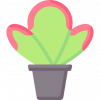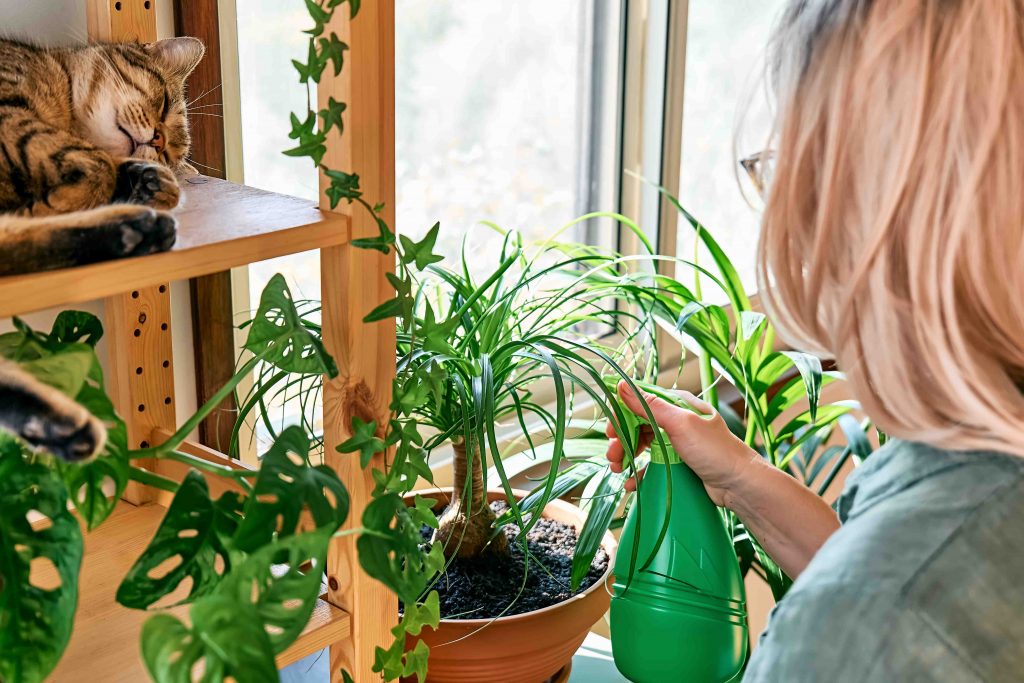Light is arguably the most important factor for indoor plant health. Without the right kind and amount of light, even the best-cared-for plants can struggle, showing signs of stress such as leggy growth, faded leaves, or slow development. Understanding how light works and how to provide the optimal lighting conditions can transform your indoor garden.
Understanding Light and Photosynthesis
Plants rely on light for photosynthesis — the process by which they convert light energy into chemical energy to fuel growth. Light provides the energy to transform carbon dioxide and water into sugars and oxygen. The quality, intensity, and duration of light all influence how effectively a plant can photosynthesize.
- Light Quality:
This refers to the spectrum or color of light. Sunlight contains a full spectrum, including blue and red wavelengths that are most useful for plants. Blue light supports leafy growth, while red light encourages flowering and fruiting. - Light Intensity:
This is how strong or bright the light is. Plants adapted to full sun require higher light intensity, whereas shade-tolerant plants thrive in lower light. - Photoperiod (Duration):
The number of hours a plant receives light daily affects its growth cycles. Some plants need long daylight hours, while others require periods of darkness.
Types of Indoor Lighting
Since indoor environments often lack sufficient natural light, supplemental lighting can be essential.
- Natural Light
Windows are the primary source of natural light indoors. South-facing windows provide the most light throughout the day, while north-facing ones offer less intense light. East and west-facing windows offer moderate light. - Fluorescent Lights
These are affordable and emit a cool light spectrum. Compact fluorescent bulbs (CFLs) work well for low to medium light plants. - LED Grow Lights
LED lights are energy-efficient and can be tailored to emit specific light spectrums, making them ideal for all plant types. They generate less heat, reducing the risk of burning leaves. - Incandescent Lights
Generally not recommended, as they produce a lot of heat and an uneven light spectrum that plants don’t use efficiently.
How to Choose the Right Light for Your Plants
- Assess Your Plant’s Light Needs:
Research your plant species to know whether it prefers bright, indirect, low light, or full sun. - Match Light Intensity:
If natural light is insufficient, use grow lights that provide the appropriate intensity. For example, succulents need bright light, so use high-intensity LED grow lights. - Position Lights Correctly:
Place lights close enough (typically 6-12 inches) to provide effective illumination but not so close as to cause heat damage. - Set a Lighting Schedule:
Most indoor plants thrive with 12-16 hours of light per day. Using timers can automate this process and maintain consistency.
Signs of Poor Lighting and How to Fix Them
- Leggy Growth:
Plants stretch towards the light, becoming tall and thin. Solution: increase light intensity or move plants closer to a light source. - Faded or Yellowing Leaves:
Often a sign of insufficient light or too much direct sunlight causing leaf burn. - Slow Growth:
May indicate a lack of adequate light energy.
Final Tips
Balancing light conditions is crucial for a thriving indoor garden. By understanding the science behind lighting and using the right tools, you can create an environment where your plants grow healthy and vibrant, no matter where you live.

